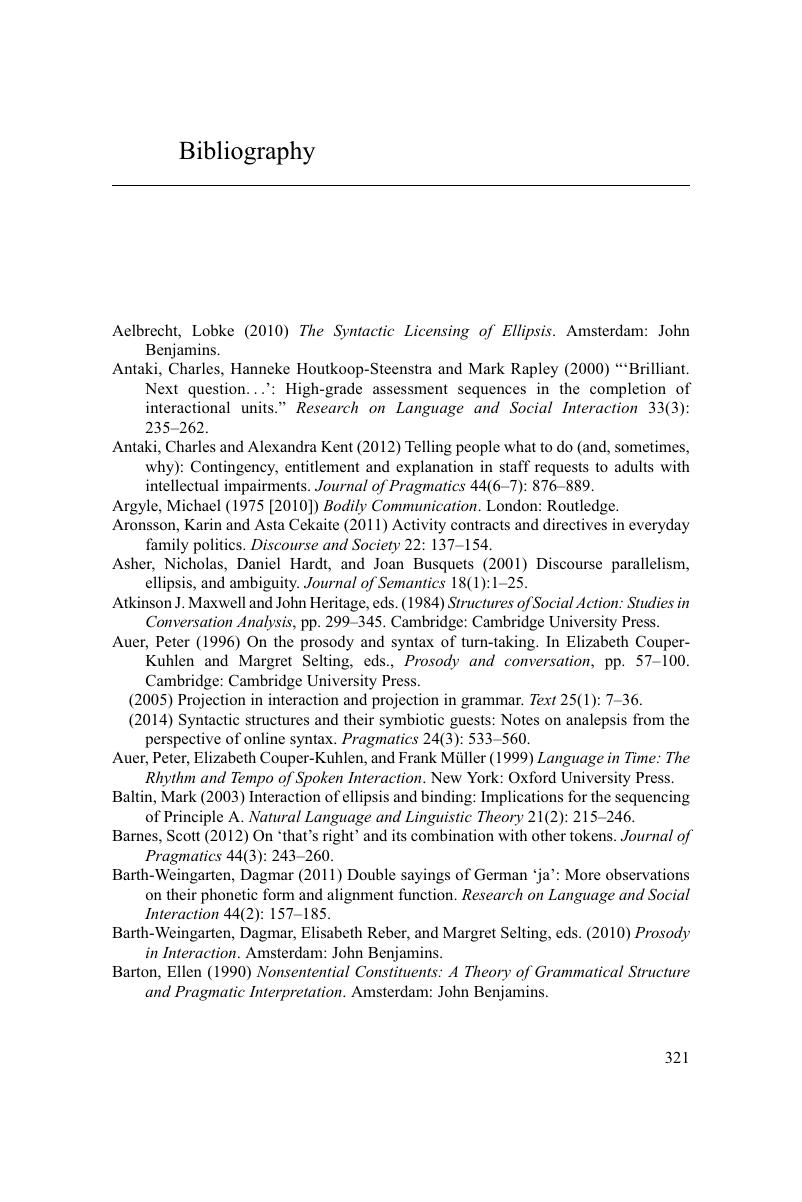Book contents
- Grammar in Everyday Talk
- Studies in Interactional Sociolinguistics
- Grammar in Everyday Talk
- Copyright page
- Dedication
- Contents
- Figures
- Tables
- Book part
- 1 Introduction
- 2 Responses in information-seeking sequences with ‘Question-word Interrogatives’
- 3 Responses in informing sequences
- 4 Sequences with assessment responses
- 5 Responses in request-for-action sequences
- 6 Conclusions
- Book part
- Bibliography
- Index
- References
Bibliography
Published online by Cambridge University Press: 05 June 2015
- Grammar in Everyday Talk
- Studies in Interactional Sociolinguistics
- Grammar in Everyday Talk
- Copyright page
- Dedication
- Contents
- Figures
- Tables
- Book part
- 1 Introduction
- 2 Responses in information-seeking sequences with ‘Question-word Interrogatives’
- 3 Responses in informing sequences
- 4 Sequences with assessment responses
- 5 Responses in request-for-action sequences
- 6 Conclusions
- Book part
- Bibliography
- Index
- References
Summary

- Type
- Chapter
- Information
- Grammar in Everyday TalkBuilding Responsive Actions, pp. 321 - 336Publisher: Cambridge University PressPrint publication year: 2015

